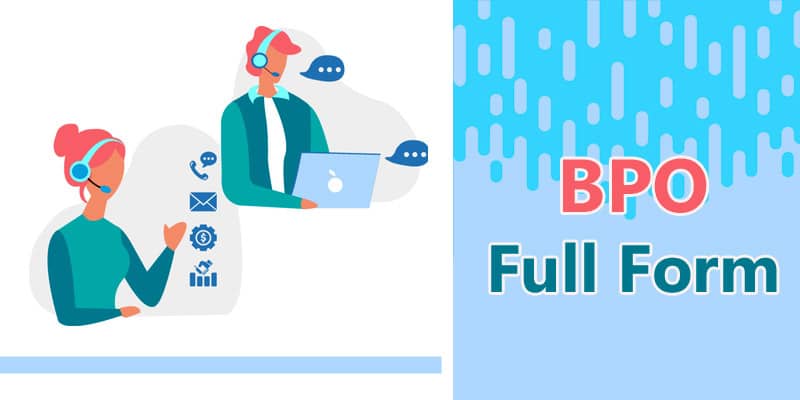The Full Form of BPO is Business Process Outsourcing.
What is BPO?
BPO works on a business strategy where a company hires another company to perform its one or more non-core tasks-they simply outsource a certain job or jobs. As a result, the process involves two parties: the client company, which outsources the task, and the external service provider, or investor vendor.
Functions of BPO
An organization engaged in business process outsourcing performs in two main areas of work – back-office functions and front-office functions.
- Back-office functions include accounting, information technology services, human resources, surveys, quality assurance, and payment services.
- Front office functions include telemarketing, customer relations services, marketing, and sales.
Types of BPO
Business outsourcing companies (a full form of BPO) have expanded their reach in the global market. Based on the service provider’s location, BPO can be divided into the following types:
- Offshore outsourcing is a kind of business process outsourcing in which the services are exported from a foreign company. Onshore Outsourcing: It is also known as domestic outsourcing, where a company contracts for services to be provided by a company operating in the same country as the hiring company.
- Nearshore Outsourcing includes services that are performed by companies or contractors based in neighboring countries.
Business process outsourcing can also be divided based on types of services being provided-
-
- KPO: Known as Knowledge Process Outsourcing, KPO includes knowledge-based specialized work, providing expertise in a specific function.
- LPO: Known as Legal Process Outsourcing, it caters to services specific to the legal area. It includes drafting legal documents, performing legal research, offering advice, etc.
- RPO: Known as Research Process Outsourcing, it refers to research, survey, and analysis functions. Organizations offering research in biotech, investment services, and marketing ideas are some examples of research outsourcing activities.
- Information Technology Enabled Service (ITES), a form of BPO, leverages information technology over the internet or data network to radically reduce costs and improve service standards. This Internet service provider aims at providing B2B e-commerce solutions.
BPO Advantages
The major reason why outsourcing is implemented is a significant and massive cost reduction.
- Decreased costs: Outsourcing cuts down on costs for required laborers, particularly for staffing and training. It also cuts down on the cost of the workspace to accommodate local employees.
- Concentration on key functions: Outsourcing allows businesses to excel in their core functions. Rather, it can focus its energies on highlighting its business competitiveness and maximizing overall growth, thereby experiencing improved customer satisfaction and increased profits.
- Expansion of global presence: outsourcing of services enables a business to stretch its services to foreign countries where they can serve the customers in local languages, thereby providing them with hassle-free customer service.
- Improved speed and efficiency: A business cannot excel in every functional domain. Companies outsource some of the functions to let specialists handle those tasks, thus saving time, improving accuracy, and increasing their capacity.
The risk associated with outsourcing processes-
- Security: Outsourcing of processes, especially involving information systems, may result in communication and data privacy risks.
- Underestimating the cost of services: The costs of upgrading and renewal of contracts may be underestimated by outsourcing companies. Other hidden costs include currency fluctuations, hardware and software upgrades, layoffs, a potential decrease in individual worker productivity, etc.
- Overdependence on service: Any fluctuation in the efficiency of the vendors affects the outsourcing company when the vendor designated for a specific process becomes a part of the workflow.
- Communication issues: Language barriers faced while hiring individual service providers spread across the globe can result in delays in new processes and hinder the feedback mechanism from different departments, thereby affecting the overall business process.
Conclusion
In today’s context, BPO refers to back-office outsourcing, which includes internal business functions such as finance, accounting, front office, human resources, customer service, and many more. Human Resources Outsourcing, Finance & Accounting Outsourcing, Knowledge Process Outsourcing, Technical Support Services, Customer Relationship Management, and Supply Chain Management are examples of cross-industry horizontal solutions provided by a top BPO service provider (SCM). They may also concentrate on key industry services such as healthcare, finance, and public services, as well as telecom, energy, and utility, logistics, retail & CPG, media & publishing, and manufacturing.

